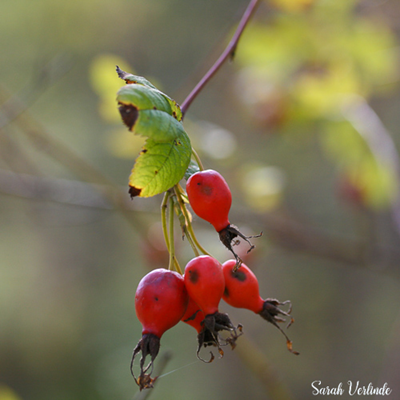Clustered rose
Rosa pisocarpa – Clustered rose, swamp rose
At a Glance:

- Family: Rosaceae
- Plant Type: Erect, deciduous shrub
- Distribution: Pacific Coast, California to British Columbia, as far east as Idaho
- Habitat: Riparian zones where a river or stream is nearby for adequate moisture or wetlands
- Height: 1-2m
- Flower/Fruits: Five petaled pink flower. Fruits are called hips and are red/orange in color, pear shaped or round, and have the sepals still attached.
- Flowering Season: May – July
- Leaves: leaves are compound with 5-9 leaflets, margins are finely serrate.
- Generation: Perennial
- Notable feature: Roses don’t technically have thorns – they’re botanically called prickles. PNW native roses have prickles that stick straight out (they don’t curve like cultivated roses) and they are somewhat soft. Clustered rose is easiest to distinguish because the flowers/fruits are usually in groups of three or more, and the hips have stamens still attached.
Restoration and Conservation
Cluster rose excels in moist areas like wetlands and stream edges. Once established, its shrubby habit is ideal to create a thicket for hedge rows and to provide shelter for small birds. Clustered rose can help stabilize soil along stream banks.
Ethnobotany
Pacific Northwest tribes (like Hoh and Quileute) ate the hips fresh or throughout the winter. Rose hips have been used to make jams and jellies. The Snohomish tribe made a decoction (similar to a thick tea) of roots to treat sore throats.
Also! The flowers are quite fragrant, so please – stop and smell the roses.
References and Resources
- NAEB: http://naeb.brit.org/uses/search/?string=rosa+pisocarpa
- Native Plants PNW: http://nativeplantspnw.com/clustered-wild-rose
- WTU Image Herbarium: http://biology.burke.washington.edu/herbarium/imagecollection/taxon.php?Taxon=Rosa%20pisocarpa
This article was written by Sarah Verlinde. For questions regarding the UWB/CC Plant Tour, contact Sarah at severlin@uw.edu.